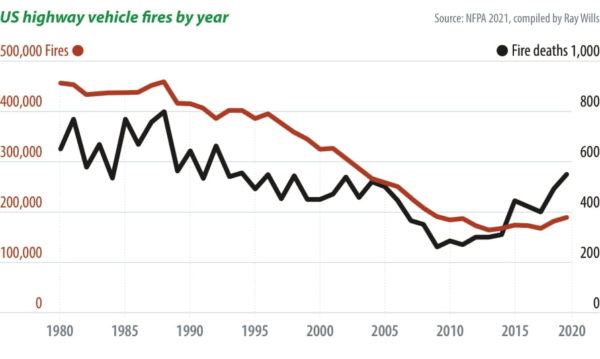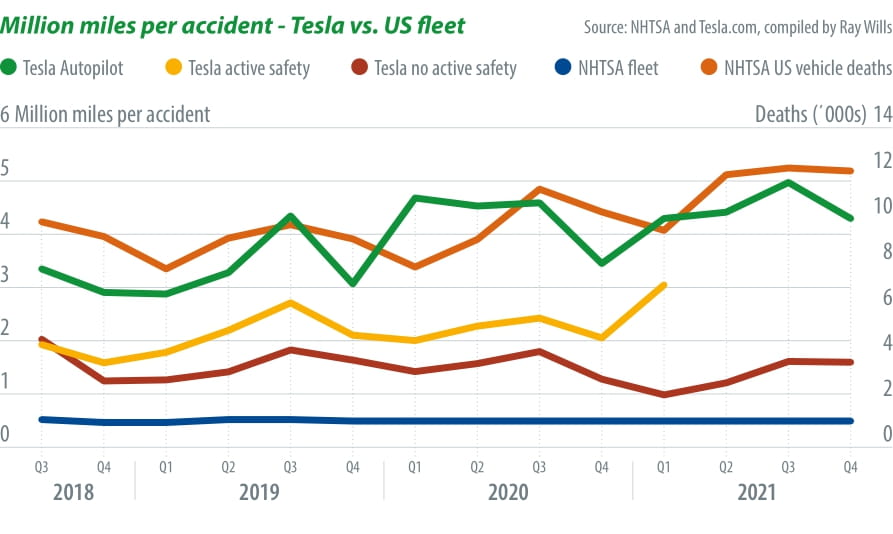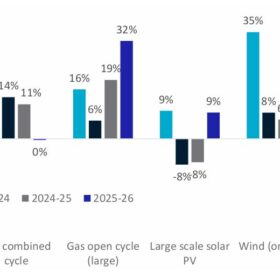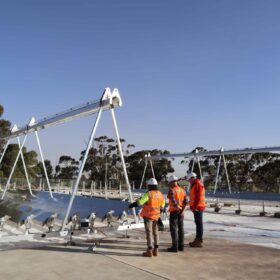From pv magazine 03/2022
Emergent electric vehicle (EV) makers are bringing to market vehicles that are substantially better-designed than offerings from the traditional internal combustion engine (ICE) manufacturers. EVs are superior in various ways, including being far more efficient in energy use. EV makers offer vehicles with more options and new features. And despite the claims of doubters, EVs are much safer on many metrics.
While ICE vehicle sales are in decline in many regions and have been since 2017, EVs are arriving in surging numbers and diversity, with increasingly innovative features. As with many disruptive technologies, new startup EV makers are rethinking what a car can be, and what it should be, with these new inclusions now simply expected as standard. All new cars are potentially smarter, with many more sensors, driver-assist, advanced car management using more computing and AI per car, technologies that work with drivers to reduce the risk of accidents by decreasing the opportunity for driver error, and plenty more to boot. EV manufacturers include more features like these to offer a better value proposition for customers. The exceptional advancement in EV safety will prove a watershed moment in vehicle safety. Tesla has taken multiple awards as safest vehicle, and other EV makers are also bringing a road-safety revolution in their vehicles.
Burn for you
It shouldn’t be news to anyone that cars can kill. But scarily, the fastest growing metric in road deaths is people outside the car, with the rise of SUVs proving fatal to pedestrians and cyclists. Deaths in vehicle fires remain another worrying part of the road toll, and a critical focus of the media has been to highlight fires in electric cars.
A fire is dangerous in any circumstance, and not to be taken lightly. Fires do occur in electric vehicles, but infrequently. Yes, a battery fire is different to an ICE fire, and must be managed appropriately by first responders. But based on Tesla data, vehicle fires in ICE are almost 11 times more frequent than EVs. Notably, fire frequency in hybrids may be comparable to ICE.
The leading causes of ICE vehicle fires are the result of mechanical failure. Nevertheless, almost 80% of US vehicle fire deaths are male, and 44% of deaths are in the 15 to 34 age group, while only 10% were over 64 years. Riding in cars with boys, it seems, remains more dangerous than other circumstances.
A key factor behind the age group difference is that older cars are more likely to catch fire, and the gender difference due to young men being more likely to be in older, “affordable” fixer-upper vehicles. Sadly, along with road death tolls, we have normalised the fact that ICE cars catch fire – that’s just how they operate, and that this risk is somehow acceptable or even inevitable.
In 40 years, ICE car fire frequency has dropped from the appalling death rates seen in the last century to be only half as appalling. The whole supply chain for fossil-fuelled transport is combustible and dangerous. Meanwhile, fire frequency in EVs is still more than 90% lower. And, despite some early misadventures, your electric car really is very unlikely to catch fire while recharging.
While the higher frequency of road deaths in ICE vehicles is evident, the hidden deaths from ICE pollution are still generally under-reported, and still mostly poorly regulated. But in the EU, Euro 7 emissions regulations are set to kill off the ICE by 2026, well before ICE bans take effect. My advice to legislators? Add to the mandate that fuel-burning car makers simultaneously make their new ICE vehicles with fire risk to be at least as low as EVs by 2026.

Rolling coal
One bizarre feature of some right-wing anti-environmentalism, particularly in the United States, is polluting the air by “rolling coal” – causing a large ICE “truck” to dump emissions. Worryingly, it is not just EVs that get targeted by these special ICE extremists – personal mobility is also targeted by this “freedumb” of speech, with the impact on both cyclists and pedestrians a far greater danger than the juvenile stunt of rolling coal on EVs. Particularly egregiously, various community activists, including the Black Lives Matter movement, have been targeted by this kind of aggressive action with bulky ICE “trucks” wielded as a tool of antagonism, and sometimes as a weapon. A move to EVs, and the inevitable demise of the ICE, will also help to counter this reprehensible behaviour.
About the author
Professor Ray Wills has had a wide-ranging career at different times as a researcher, academic, planner, consultant, adviser, manager, executive, and futurist. His diverse experience means he has developed an exceptional network across the political and administrative arms of government, as well as business and the broader community. Wills has substantial expertise in ecology, sustainability, climate change science, and the effects of expected future climates on Australia. He is recognised as an authoritative and respected commentator and adviser on sustainability across all sectors, including the built environment, clean tech, energy infrastructure, industrials, manufacturing, resources, transport, and water.
This content is protected by copyright and may not be reused. If you want to cooperate with us and would like to reuse some of our content, please contact: editors@pv-magazine.com.








Battery tech has changed in the last few years to a degree that fires will never happen in a BEV. With LFP batteries now that can withstand a lot of torture without bursting into flames, fires will become a thing of the past and make BEV extremely safe compared to ICE vehicles. Even Tesla’s new 4680 batteries are now obsolete and Tesla has ordered 1000s of the new LFP blade batteries for the series 3. LFP batteries have also done away with using Nickle and have changed to cobalt with a bonus 25% added capacity to storage without any difference in price to the battery pack.
The article talks about Europe converting from ICE to EV’s by 2026..hiwever Europe also is “ready to adopt” Gas as a Green Fuel.. in which case (as it.. erroneously.. dies not pollute) it would NOTVbe subject to any emissions control as it has been deemed as Green.. right…???
You get the idea..!!!
First a nation has EAO’s (Elected, Appointed Officials) that work FIRST for Vested Interests, and then a large of them under the EU Flag futher muddying any and every thing this “army” of EAO’s come near… and THE PEOPLE JUST WATCH HELPLESSELY ON THE SIDELINES as they stand on the Sidelines.. Watch and “Pay the Bills” of the gping-on’s of this EAO Army…